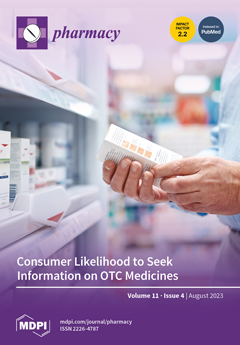Open AccessOpinion
Community Pharmacies in the Asian Countries of Developing Health System: Formation, Regulation, and Implication
by
Shaymaa Alenezi, Mona Alanazi, Reaam Aljazaeri, Marwah Almuzaini, Shorouq Alrasheidi, Wafa Bin Shamlan, Raghad Aljohani, Ghadeer Alhawiti, Meaad Alqarni, Ehdaa Aljabri, Majd Qmmash and Mohammed Kanan
Viewed by 2961
Abstract
Community pharmacies (CPs) in Asian countries are often the first point of contact for patients withinthe healthcare system and their preferred place to purchase medicines. The number of CPs may vary across Asian countries, and each country has developed its own design and
[...] Read more.
Community pharmacies (CPs) in Asian countries are often the first point of contact for patients withinthe healthcare system and their preferred place to purchase medicines. The number of CPs may vary across Asian countries, and each country has developed its own design and functioning. The regulatory environment plays a crucial role in shaping and governing CPs. The aim of this study was to conduct a comprehensive literature review in order to enhance understanding of the establishment and regulation of CPs. By undertaking this review, the researchers, policymakers, and practitioners sought to gain a deeper insight into the performance and functions of CPs and the regulatory frameworks that govern them. Moreover, this review shed light on implementation strategies, effects on patient outcomes, and the barriers and challenges associated with their establishment. A narrative literature review method was adopted with specific inclusion and exclusion criteria. Significant disparities can be observed when comparing the stated intentions of regulations with their actual implementation. Recently, there has been an inclusion of public health practices. Unfortunately, pharmacy procedures conducted in such environments have been characterized by inadequate understanding and inappropriate care. This poor performance can be attributed to employees’ focus on maximizing profits. Several shortcomings can arise, including incomplete patient history documentation, failure to refer patients who require medical attention, unauthorized dispensing of prescription-only medicines (POM), dispensing clinically inappropriate or excessive medication doses, selling incomplete antibiotic courses, and inadequate information and counseling services. Regulatory interventions can help strengthen these services.
Full article
►▼
Show Figures





